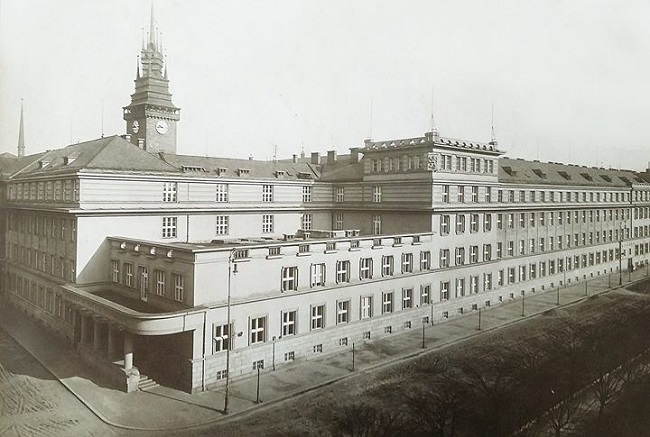
Pardubice Gallery presents the buildings of Ladislav Machoně
 |
Pardubice - The East Bohemian Gallery in Pardubice today opened an exhibition dedicated to architect Ladislav Machoň. From the 1920s to the 1930s, he designed four public buildings, one square, and one commercial building in the city, known as the Machoň Passage.
"We wanted to present Machoň as a personality who significantly and interestingly shaped the city center," said curator Vanda Skálová to ČTK.
The first building in Pardubice designed by Machoň is the Directorate of Posts and Telegraphs. The building on Jahnova Street is owned by the Pardubice Region. He is also the author of the appearance of the State Secondary School, which today houses the secondary school of electrical engineering. Between the two public buildings is Smetanovo náměstí, which is also his work.
Machoň also designed the buildings of the court and tax offices. Currently, they are used by the secondary chemical school and the district and regional court. On Míru Street, he is the author of the Post Office, which still operates there today. It is a reduced design of a telephone exchange for Prague's Letná. Opposite the post office stands Machoň's most famous building, the Commercial and Rental House Passage.
"His buildings capture the transformation of architectural styles in the interwar period, from national style through modernist position to functionalism with echoes of purism," Skálová said.
Machoň lived from 1888 to 1973. During World War II, he was active in the resistance, and in the 1950s he was a political prisoner. He had a connection to Pardubice. His father Václav was the principal of the Pardubice secondary school and married Kateřina Pernerová from Týnec nad Labem, who was related to Jan Perner, the builder of railway lines.
Machoň was primarily a representative of modern classicism and functionalism. He has significant buildings not only in Pardubice. For example, he designed a duplex villa for the Čapek brothers. From 1909, he worked in the studio of Jan Kotěra, where he remained as a construction director for 15 years. He only began creating designs that bore only his name later.
"When he collaborated with Jan Kotěra, he was in contact with many important people in the ministries and offices where contracts were decided. We assume that these relationships played a role in several Pardubice contracts," Skálová added.
The English translation is powered by AI tool. Switch to Czech to view the original text source.
0 comments
add comment
Related articles
0
03.10.2023 | Pardubice Region is completing the renovation of a listed school for 66 million crowns
0
12.05.2021 | Czech Post offers its building for sale to the city of Pardubice
1
19.03.2015 | The exhibition presents the reconstruction of Klementinum in the 20th century
0
15.07.2014 | Workers are repairing the glass hall of Machoň's secondary school in Pardubice
0
04.12.2013 | The repaired Machoň Passage is almost fully occupied after the repairs
0
06.04.2013 | The architect Machoň significantly influenced the shape of the center of Pardubice
0
06.04.2013 | Machoň's passage in Pardubice does not have approved apartments










